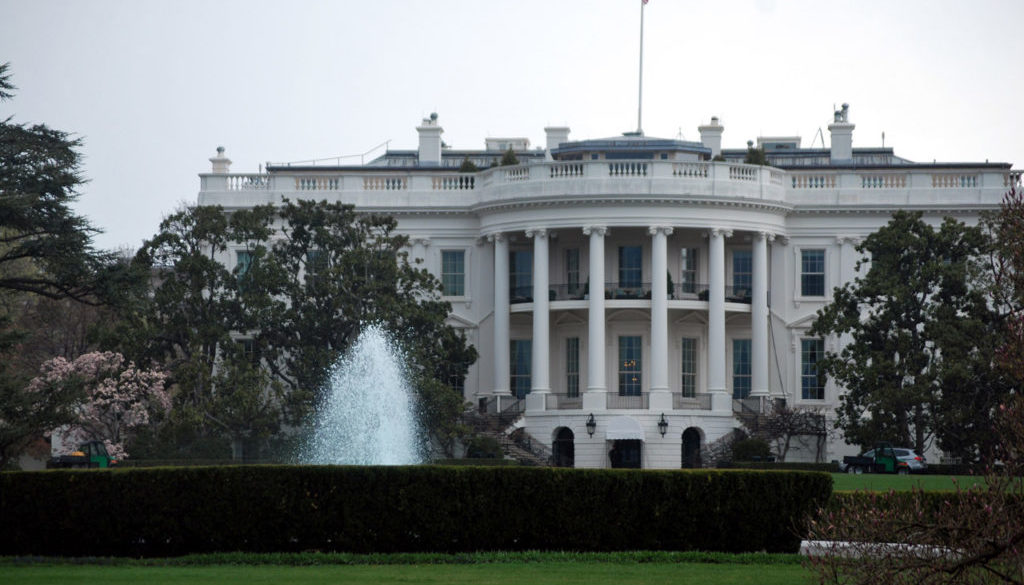Chamber’s Brief Lays Bare Crackpot Theory at Heart of Two-for-One Order
By Amy Sinden, Center for Progressive Reform
I don’t know what executive order the Chamber of Commerce is defending in the amicus brief it filed Monday in Public Citizen v. Trump. But it doesn’t appear to be the one at issue in that lawsuit. The lawsuit charges that Trump’s “one-in, two-out” executive order is unconstitutional. That’s the order he issued in January requiring agencies to repeal two regulations for every one they issue. It requires agencies to make sure that the costs imposed by any new regulation are entirely offset by the costs of the two repealed regulations. And, yes, it’s just as absurd as it appears at first glance – akin to a business deciding to close two old stores for every new one it opens in order to offset the costs of the new store, entirely ignoring the revenue side of the ledger.
Perhaps the inherent absurdity is why the Chamber of Commerce’s lawyers decided to defend a different executive order in their brief. Here’s a representative excerpt from their argument:
“Executive Order 13771 will provide federal agencies with incentives to undertake a rigorous review of the costs and benefits of existing regulations and adopt efficient regulatory programs in the future.”
Huh? The Executive Order 13771 I read focuses exclusively on regulatory costs. The word “benefit” doesn’t show up once in the document. The Chamber is trying to pass it off as just another version of the cost-benefit analysis requirement that’s been imposed on federal agencies since the Reagan administration. But Trump’s order is something very different, and far more insidious. Here’s how nine other administrative law professors and I explained it in an amicus brief supporting the plaintiffs in this case:
“Executive Order 13,771 . . . represents a radical and dramatic change in course from these longstanding ideas about regulatory reform[, which have centered primarily around the idea of cost-benefit analysis]. It is grounded in an idea that has begun to be referred to as ‘regulatory budgeting,’ the idea being that each agency has a fixed ‘budget’ or cap for the amount of regulatory ‘costs’ it is allowed to impose on society each fiscal year. . . . The idea of ‘regulatory budgeting’ strays far from the moorings of welfare economics that have grounded previous regulatory reform efforts into a new realm entirely untethered from any intellectually coherent theory about how government does or should work. . . .
“A small, nascent body of literature has made a few tentative efforts to defend the idea of ‘regulatory budgeting’ on the basis of a purported analogy between regulatory costs and taxes. The idea is that regulatory costs are akin to a tax because, like taxes, they impose costs on the private sector. Because agencies each receive a budget capping the amount of tax revenues they can spend each year, so the argument goes, agencies should similarly have a ‘regulatory budget’ capping the amount of regulatory cost they can impose on society each year.
“Right away, the first flaw in the analogy becomes apparent. Standard government budgets, like all budgets, have two columns. One column lists tax revenues coming in; the other column lists government expenditures going out. And the government expenditures detailed in the second column are limited by the tax revenues tallied in the first. But the regulatory budget contains only one column—regulatory costs. This one-column, cost-only regulatory budget provides no logical or principled way to determine what the limit or cap on regulatory cost “expenditures” should be. This puts proponents in the awkward position of having to come up with an admittedly arbitrary number to serve as the cap on ‘expenditures’ of regulatory costs.
“The second flaw in the argument becomes apparent upon closer examination of the purported analogy between regulatory costs and taxes. Taxes are aimed primarily at raising revenue while regulations, in addition to generating benefits, often aim to hold private actors accountable for harms they inflict on others. A regulation that imposes costs on a business, by, for example, forcing a power plant to install scrubbers on its smokestacks, is not so much imposing a tax as it is forcing the business simply to take responsibility for actions that impose harms on other people without their consent—harms like suffering from asthma, bronchitis, or heart disease just from trying to breathe the air. Internalizing externalities in this way is not government overreach; it is simply a matter of basic fairness and personal responsibility.”
In short, this idea of cost-only regulatory budgeting that Trump’s executive order tries to implement is, believe it or not, actually a thing – an absurd thing, but a thing nonetheless – that the right-wing has been trying on for size in think tank white papers and so on for several years now. Interesting that now that it’s become a reality, the big industry trade groups almost seem to be backing away from it. Maybe once they sat down to actually try to defend it in a brief in the harsh light of the adversarial process, they had a hard time figuring out how to dress it up as anything other than the crackpot theory it is.

